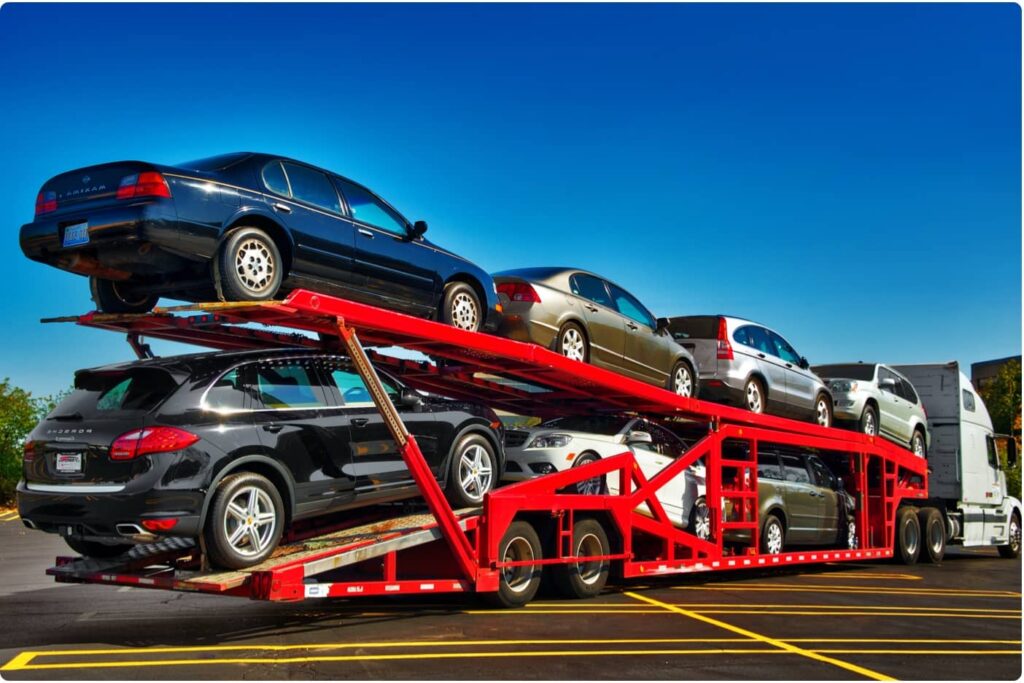What Is Backhauling (Complete Guide)
In the realm of logistics and transportation, backhauling has emerged as a pivotal strategy for optimizing operations, reducing costs, and promoting sustainability. Backhauling refers to the practice of utilizing the return trips of transport vehicles, such as trucks, to carry additional cargo or loads. By effectively leveraging these return trips, companies can minimize empty truck miles, maximize resource utilization, and enhance overall operational efficiency.
The concept of backhauling revolves around the idea that a transport vehicle should not return empty after delivering its primary load. Instead, it can be utilized to carry backhaul loads, making the most of its capacity and reducing inefficiencies. Backhauling offers numerous benefits, including reduced fuel consumption, lower transportation costs, and increased profitability for businesses.
One of the key objectives of backhauling is to optimize asset utilization. By identifying suitable backhaul opportunities and consolidating loads, companies can ensure that their vehicles remain productive throughout their journeys. This approach leads to improved route planning, reduced wasted capacity, and enhanced customer satisfaction.
Moreover, backhauling aligns with the growing emphasis on sustainability in the transportation industry. By minimizing empty truck miles and maximizing load capacity, backhauling reduces carbon emissions and supports environmental conservation efforts.
As technology advances and the industry becomes more interconnected, the adoption of backhauling strategies is increasingly crucial for companies seeking to stay competitive, streamline operations, and reduce their ecological footprint. Through effective backhauling, businesses can achieve greater efficiency, cost savings, and contribute to a more sustainable future.
What Is Backhauling in the Moving Industry?

Efficient transportation is a cornerstone of the moving industry, and backhauling plays a vital role in optimizing fleet operations. With the advent of advanced technologies, such as backhaul trucking and wireless backhaul, logistics companies can streamline their processes, reduce costs, and enhance sustainability. In this article, we delve into the concept of backhauling and its significance in the moving industry.
Understanding Backhauling: Backhauling, in the context of transportation, refers to the practice of utilizing the return trip of a truck or vehicle after delivering its primary load. Rather than returning empty, backhaul trucking seeks to maximize vehicle capacity and minimize wasted resources. This practice not only reduces costs but also promotes environmental sustainability by minimizing empty miles and carbon emissions.
The Role of Wireless Backhaul: Wireless backhaul technology has revolutionized fleet operations in the moving industry. It enables real-time communication and data exchange between vehicles, dispatchers, and warehouses. Through wireless backhaul systems, logistics companies can optimize routing, monitor vehicle performance, and coordinate operations seamlessly. This technology empowers fleet managers to make data-driven decisions, enhance efficiency, and improve customer satisfaction.
Maximizing Efficiency in Fleet Operations: Backhauling is a powerful strategy for maximizing efficiency in fleet operations. By planning routes strategically and identifying backhaul opportunities, logistics companies can minimize empty miles, reduce fuel consumption, and increase revenue. Efficient backhaul practices contribute to lower transportation costs, improved asset utilization, and enhanced profitability.
In the dynamic moving industry, backhauling and wireless backhaul technologies have emerged as game-changers. By harnessing the potential of backhaul trucking and leveraging wireless communication, logistics companies can optimize fleet operations, reduce costs, and minimize their environmental footprint. Embracing these advancements ensures that the moving industry remains at the forefront of efficient and sustainable transportation.
Backhaul Types: Internal and External

Efficient transportation and logistics are crucial for the freight industry, and backhaul networks play a pivotal role in optimizing operations. Within backhaul networks, two key types exist: internal and external. By understanding these backhaul types and their impact on core network efficiency, freight companies can better manage backhaul loads, reduce empty truck miles, and leverage partnerships with freight brokers. In this article, we delve into the significance of internal and external backhauling and their benefits in the freight industry.
Internal Backhauling: Internal backhauling refers to utilizing return trips within a company’s own network. By identifying opportunities to consolidate loads and maximize truck capacity on return trips, freight companies can minimize empty truck miles, lower costs, and increase operational efficiency. Internal backhauling optimizes resources by efficiently utilizing existing assets and streamlining delivery routes.
External Backhauling: External backhauling involves collaborating with freight brokers or other companies to find backhaul opportunities. Freight brokers specialize in connecting carriers with return loads, facilitating efficient utilization of truck capacity and reducing empty miles. Through external backhauling, freight companies can tap into a broader network of available loads, increase revenue, and forge beneficial partnerships within the industry.
Enhancing Efficiency in the Core Network: Both internal and external backhauling contribute to enhancing efficiency in the freight industry’s core network. By minimizing empty truck miles and maximizing load capacity, backhaul types optimize resource allocation, reduce fuel consumption, and decrease carbon emissions. Efficient backhaul practices also lead to cost savings, increased profitability, and improved customer service.
Leveraging Freight Brokers: Freight brokers play a vital role in external backhauling. Their expertise in connecting carriers with suitable backhaul loads enables freight companies to access a wider pool of opportunities. Collaborating with freight brokers empowers companies to leverage their industry knowledge, find compatible partners, and expand their network of backhaul options.
In the dynamic freight industry, understanding and effectively utilizing internal and external backhauling types are essential for enhancing operational efficiency. By capitalizing on internal backhaul opportunities within a company’s network and forging partnerships with freight brokers for external backhauling, freight companies can optimize their core network, reduce empty truck miles, and improve overall profitability. Embracing these backhaul strategies ensures a sustainable and thriving freight industry in the face of evolving market demands.
Benefits of Backhauling

In the world of logistics and transportation, backhauling has emerged as a powerful strategy for optimizing fleet operations. By leveraging a well-established backhaul network, companies can unlock a multitude of benefits that contribute to increased efficiency, reduced costs, and improved sustainability. In this article, we explore the advantages of implementing backhauling practices and the positive impact they have on fleet operations.
Backhauling Improves Fleet Operations: Backhauling plays a pivotal role in improving fleet operations. By utilizing the return trip of trucks or vehicles after delivering primary loads, companies can maximize vehicle capacity and minimize wasted resources. This results in reduced empty miles, improved asset utilization, and increased revenue generation. Backhauling allows for streamlined routing and scheduling, ensuring that trucks are always carrying loads, reducing downtime, and enhancing overall fleet productivity.
Optimized Resource Allocation: With a robust backhaul network in place, logistics companies can optimize resource allocation. By matching delivery routes and schedules more efficiently, they can minimize empty truck miles, decrease fuel consumption, and reduce carbon emissions. Backhauling enables companies to leverage existing assets to their fullest potential, maximizing the value derived from their fleet.
Cost Savings and Improved Profitability: Implementing backhauling practices leads to significant cost savings for companies. By reducing empty miles and making more efficient use of truck capacity, companies can lower fuel costs and operational expenses. Moreover, the increased revenue from carrying backhaul loads on return trips contributes to improved profitability. Backhauling allows companies to achieve more with fewer resources, leading to a stronger bottom line.
Sustainable Operations: Backhauling aligns with sustainability goals, making it an environmentally friendly approach. By minimizing empty truck miles and optimizing load capacity, companies reduce carbon emissions and overall environmental impact. Backhauling enables companies to play an active role in promoting sustainable transportation practices, contributing to a greener and more eco-conscious industry.
Backhauling has become a key driver for optimizing fleet operations in the logistics industry. By harnessing the benefits of a robust backhaul network, companies can improve efficiency, reduce costs, optimize resource allocation, and support sustainable operations. Embracing backhauling practices enables logistics companies to stay ahead in a competitive landscape while simultaneously reducing their environmental footprint. As the industry evolves, backhauling will continue to play a pivotal role in shaping the future of efficient and sustainable fleet operations.
Are you looking for a reliable and cost effective auto transport company for shipping your vehicle? Check our instant quote and find a suitable offer for you.
Misunderstandings About Backhauling

Backhauling is a critical strategy in the logistics and transportation industry, but it is often surrounded by misconceptions and misunderstandings. These misconceptions can hinder companies from fully leveraging the benefits of backhauling and optimizing their operations. In this article, we aim to address and debunk some of the common misunderstandings about backhauling.
Myth #1: Backhauling is Inefficient: One prevailing misconception is that backhauling is an inefficient practice. However, when implemented correctly, backhauling improves fleet operations by reducing empty truck miles and maximizing asset utilization. By strategically identifying backhaul opportunities and consolidating loads, companies can significantly enhance efficiency and minimize costs.
Myth #2: Backhauling is Complex: Another misconception is that backhauling is a complex process that requires intricate logistics management. While it does require careful planning and coordination, advancements in technology and the availability of freight brokers have made it easier to identify suitable backhaul loads and streamline operations.
Myth #3: Backhauling is Only Suitable for Large Companies: Some believe that backhauling is only feasible for large logistics companies with extensive networks. However, businesses of all sizes can benefit from backhauling. Collaboration with freight brokers and utilizing online platforms can help smaller companies access backhaul opportunities and optimize their operations effectively.
It is crucial to dispel misunderstandings surrounding backhauling in the logistics industry. By understanding the true benefits and dispelling misconceptions, companies can unlock the potential of backhauling to enhance efficiency, reduce costs, and improve overall fleet operations. Embracing backhauling as a valuable strategy allows businesses to optimize their operations, maximize resource utilization, and stay competitive in today’s rapidly evolving transportation landscape.
Challenges of Backhaul

Backhaul, a strategy that optimizes the utilization of transport vehicles, offers numerous benefits for trucking companies. However, it also presents its fair share of challenges. In this article, we shed light on some of the key obstacles faced by auto companies when implementing backhaul practices and how to address them.
Challenge 1: Finding Suitable Backhaul Loads: One major challenge is sourcing appropriate backhaul loads. Trucking companies need to identify compatible loads that align with their routes and equipment specifications. Relying solely on their drivers to secure backhaul opportunities can be time-consuming and inefficient.
Challenge 2: Operational Coordination: Coordinating backhaul operations can be complex, especially when managing multiple drivers and vehicles. Efficient communication, route planning, and load consolidation are essential to maximize backhaul potential. Trucking company need to invest in robust technologies and systems to streamline coordination and ensure seamless operations.
Challenge 3: Competition and Pricing: Competition among trucking companies vying for backhaul loads can impact pricing and profitability. Finding the right balance between securing backhaul loads and maintaining reasonable rates is a challenge that requires market awareness, negotiation skills, and strategic decision-making.
While backhauling offers significant advantages for them, it is not without its challenges. Overcoming obstacles such as sourcing suitable backhaul loads, coordinating operations, and navigating competitive pricing requires careful planning, technology integration, and effective communication. By addressing these challenges head-on, they can unlock the full potential of backhaul strategies, optimize their operations, and drive greater efficiency and profitability in the ever-evolving transportation industry.
FAQs

How Can I Avoid Paying Too Much for Backhauling?
To avoid paying too much for backhauling, consider these key strategies. Firstly, leverage technology and online platforms that connect shippers and carriers, enabling you to find cost-effective backhaul opportunities. Additionally, establish relationships with freight brokers who specialize in connecting carriers with suitable backhaul loads at competitive rates. Consolidating loads and optimizing routes can help maximize efficiency and minimize costs. Finally, stay informed about market trends and pricing to negotiate fair rates. By implementing these tactics, you can ensure that you are getting the best value for your backhaul operations.
Why a Backhauling Strategy Is Needed?
A backhauling strategy is crucial for optimizing transportation operations. It minimizes empty truck miles by utilizing return trips, maximizing vehicle capacity, and reducing fuel consumption. Implementing a backhauling strategy enhances operational efficiency, lowers costs, and increases profitability. By identifying backhaul opportunities and consolidating loads, companies can make the most of their resources and minimize wasted capacity. This strategy also promotes sustainability by reducing carbon emissions. Overall, a well-executed backhauling strategy ensures optimal asset utilization, improved profitability, and a more environmentally conscious approach to transportation.

